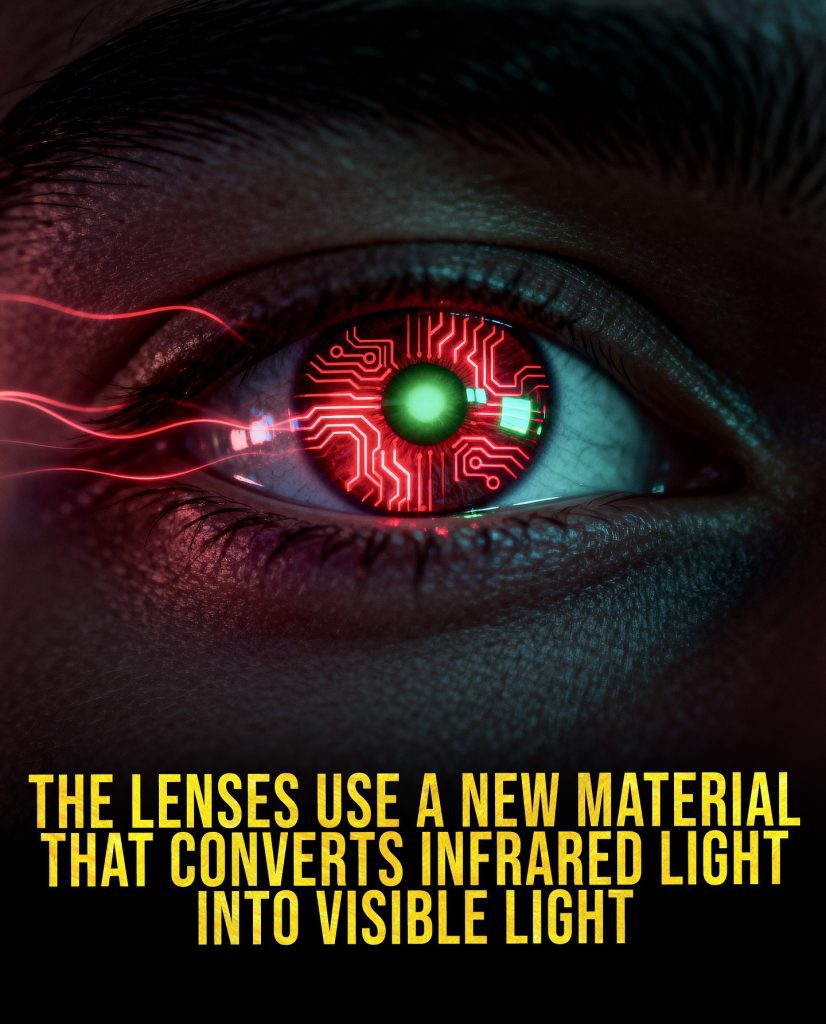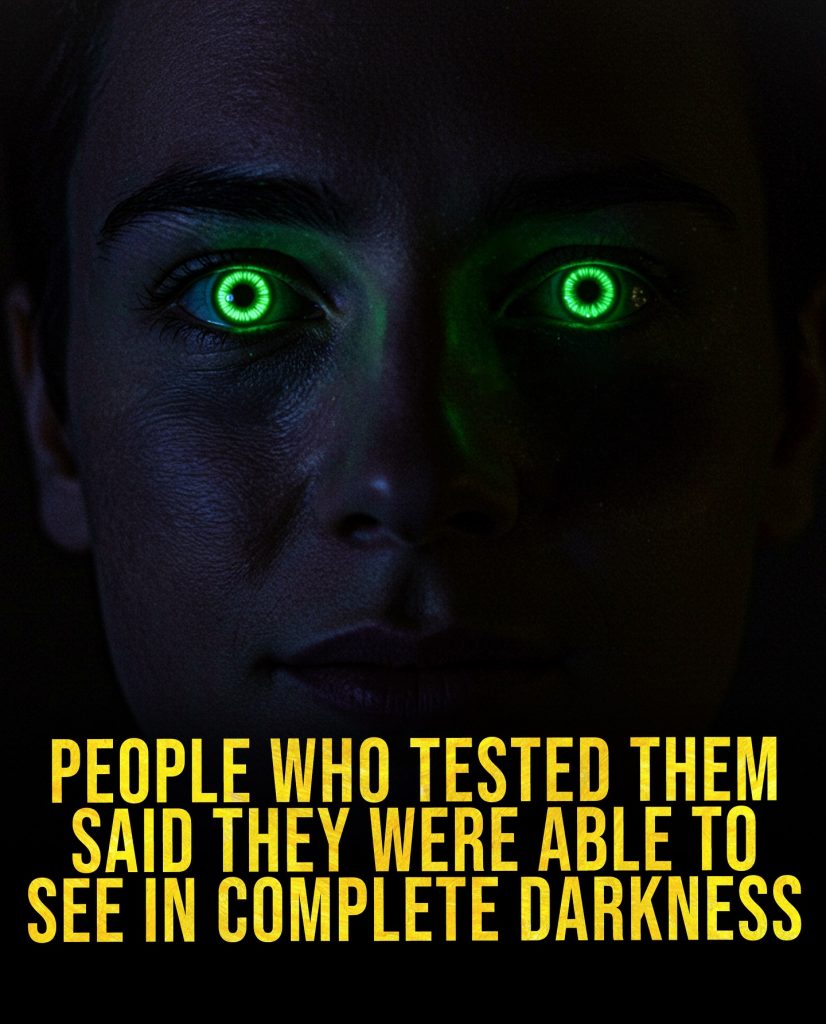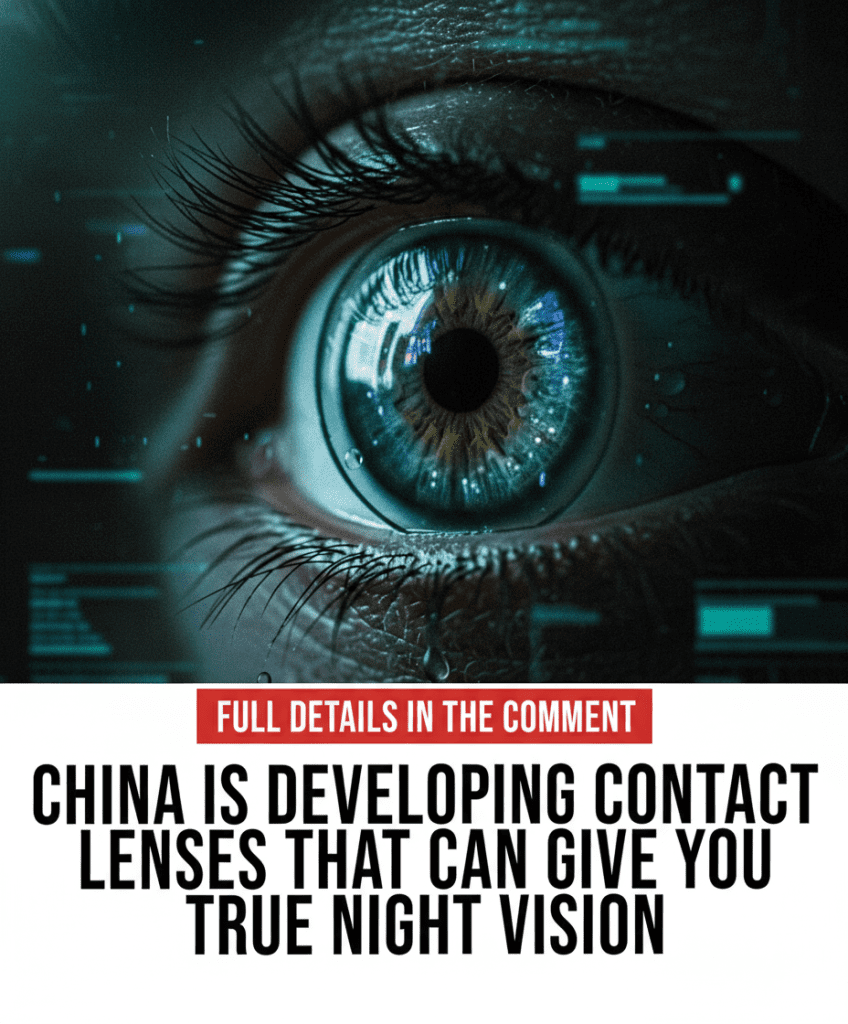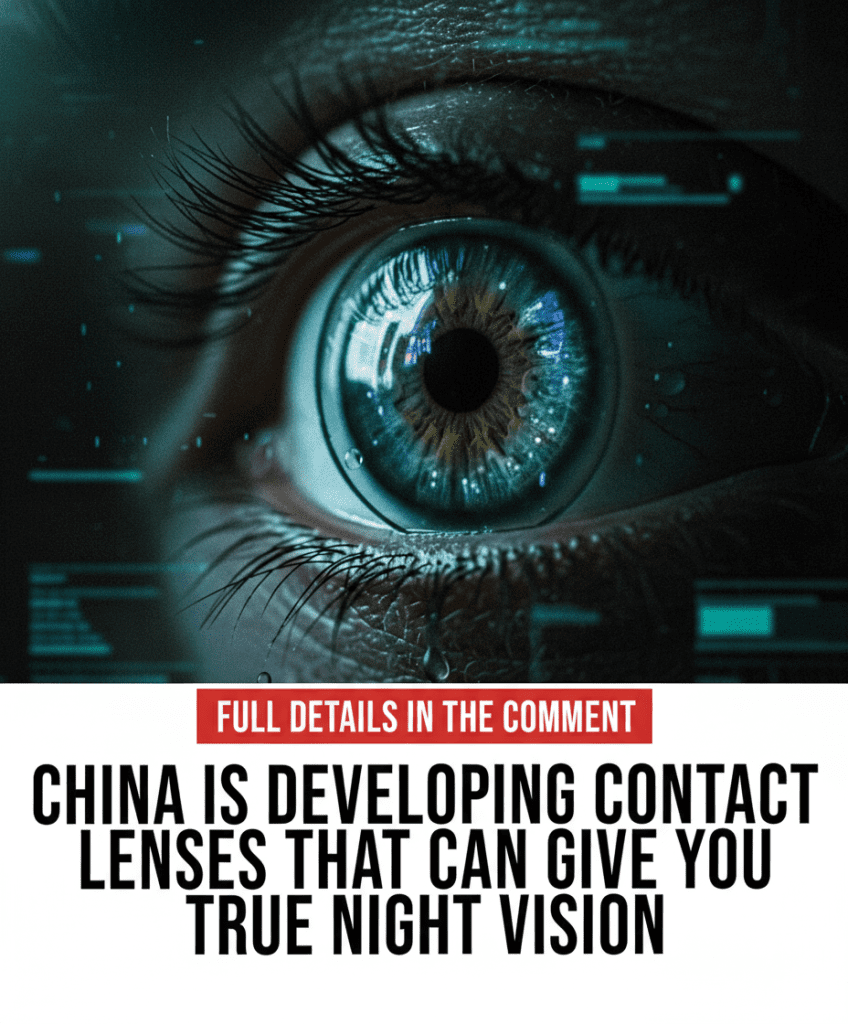Scientists in China Develop Revolutionary Contact Lenses That Convert Infrared Light Into Visible Light — Giving True Night Vision Without Batteries
It sounds like something straight out of a science fiction movie — but it’s real. Scientists in China have created a groundbreaking type of contact lens that gives users the ability to see in complete darkness. These new lenses use a material capable of converting infrared light, which is normally invisible to the human eye, into visible light. In simple terms, they could allow people to literally see in the dark — and they do it without any power source.

The innovation comes from researchers at a Chinese university working on materials science and optical engineering. They have successfully developed a new film only a few micrometers thick that can be integrated into soft contact lenses. This film acts as a light converter: it takes in infrared wavelengths — the same kind used in night vision cameras — and transforms them into visible images that the human eye can detect. The results from early testing have been astonishing.
Participants wearing the experimental lenses were able to see in total darkness, even when their eyes were closed. That’s because the lenses pick up infrared signals, translating them into visible patterns that appear directly to the wearer. Imagine being in a pitch-black room and still being able to see shapes, outlines, and even color-coded light — all through what looks like a normal pair of contact lenses.
What’s even more impressive is how simple the lenses are to use. They require no power, no battery, and no external device. The lenses maintain over 90% transparency during normal daylight conditions, meaning wearers can see clearly in the daytime without distortion. The research team also claims that the technology can color-code different infrared frequencies, turning them into shades of red, green, or blue to distinguish various heat sources or objects in the environment.

This kind of innovation could transform industries that rely on visibility in low light. Think of rescue workers searching in disaster zones at night, firefighters navigating through smoke, or medical professionals performing operations with enhanced vision. Military and defense organizations are also closely watching the technology’s progress, as traditional night vision equipment tends to be bulky, power-hungry, and expensive.
But it’s not just for professionals. If the technology becomes affordable, it could find everyday uses — from driving at night to outdoor exploration and even sports. Imagine running, camping, or biking after dark with built-in night vision that feels as natural as your own eyesight.
The technology behind it lies in a field called photoluminescence. The lens material captures incoming infrared light and emits visible light in response, creating a live, natural image rather than the grainy green visuals associated with current night vision gear. Since it’s all passive, the lenses don’t heat up or need to recharge, making them safe for continuous use.

Although the concept is still in the research and testing phase, the excitement around it is spreading quickly. The lenses have been tested on small surfaces and prototypes, and researchers are now working to refine comfort, safety, and stability for human wear. Early results suggest that they could be manufactured at scale using existing contact lens materials, making commercial use possible within the next few years.
If successful, this could be one of the most significant optical breakthroughs of the decade — blending biotechnology, nanomaterials, and photonics into a single innovation that changes how humans interact with their surroundings. Night vision could move from military helmets and goggles to something as ordinary as putting in your daily contacts.
The promise of seeing in complete darkness has always captured the human imagination, from myths of superhuman vision to futuristic spy gadgets. Now, thanks to science, it’s edging closer to reality — not as a fantasy, but as something you could wear on your eye. The future of sight is coming, and it might just glow in the dark.


